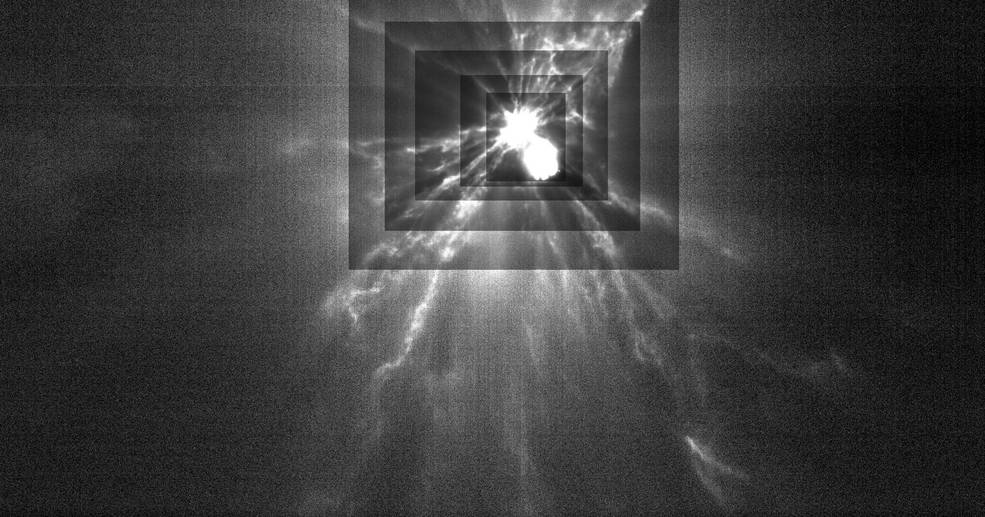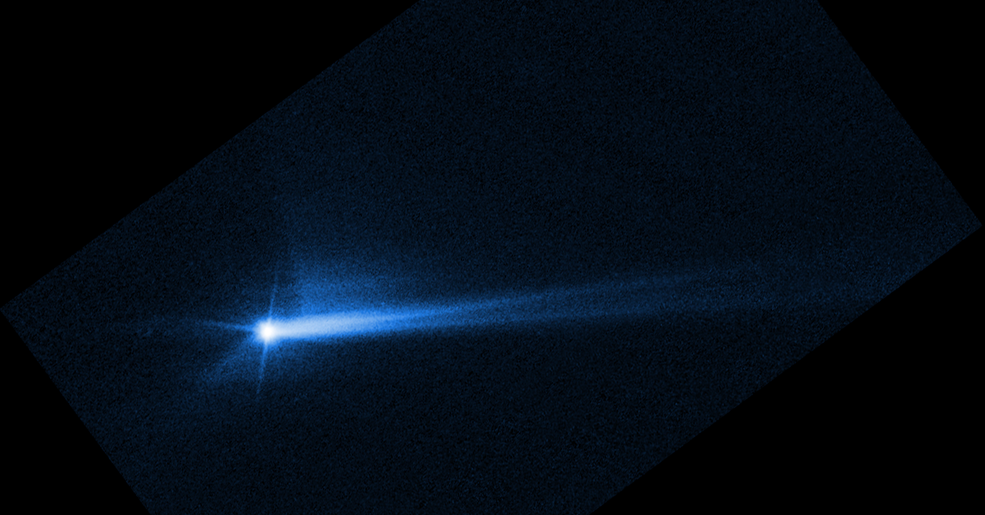NASA's asteroid-deflection mission is a smashing success, shortens space rock's orbit by a stunning 32 minutes
This is the first successful test of our ability to redirect potentially cataclysmic asteroids.

A spacecraft that smashed into a small asteroid two weeks ago has redirected the space rock's orbit around its larger partner by a stunning 32 minutes — even better than NASA engineers has predicted. The results are great news for humanity's first test of its planetary defense system.
On Sept. 26, the Double Asteroid Redirection Test (DART) spacecraft disintegrated and created a massive plume of dust as it collided with the asteroid Dimorphos, which is 7 million miles (11 million kilometers) from Earth. DART slammed into Dimorphos at roughly 14,540 mph (23,400 km/h). The probe's original goal was to change the orbit of Dimorphos around its larger partner — the 1,280-foot-wide (390 meters) asteroid Didymos — by at least 73 seconds, but the spacecraft actually changed Dimorphos' orbit by a whopping 32 minutes.
This means the 1,210-pound (550 kilograms), $314 million DART spacecraft — a squat, cube-shaped probe that consisted of sensors, an antenna, an ion thruster and two 28-foot-long (8.5 m) solar arrays — pushed Dimorphos closer to Didymos and shortened the smaller asteroid's orbital path. The smashing success raises the odds that a method like this could one day be used to nudge a harmful asteroid off a collision course with Earth.
Related: Watch NASA's DART spacecraft hit 'bullseye' by smashing into an asteroid
"This is a watershed moment for planetary defense and a watershed moment for humanity," NASA Administrator Bill Nelson said during a news conference Tuesday (Oct. 11). "We showed the world that NASA is serious as a defender of this planet."

DART recorded and beamed back its final moments with its onboard Didymos Reconnaissance and Asteroid Camera for Optical Navigation, which was also responsible for automatically navigating the spacecraft onto its collision course.
As DART came ever closer to the space rock, its camera feed showed the asteroid's landscape bloom from a single, pale-gray pixel to a rough and craggy terrain strewn with sharp, shadowy rocks. DART hit the 525-foot-wide (160 m) Dimorphos just 56 feet (17 m) from its exact center — an astronomical "bull's-eye."
Sign up for the Live Science daily newsletter now
Get the world’s most fascinating discoveries delivered straight to your inbox.
Following the collision, powerful observatories have been watching the asteroid from Earth and, in the case of the James Webb Space Telescope (JWST) and the Hubble Space Telescope, from space. By looking for when the combined sunlight reflected from the asteroid pair dipped, indicating that Dimorphos had passed into the larger Didymos' shadow, scientists calculated that Dimorphos' orbital period was more than a half hour shorter than before the impact. Follow-up observations from radar instruments also directly measured the same orbit, confirming that it had gone from 11 hours and 55 minutes to 11 hours and 23 minutes.
"Let's all just kind of take a moment to soak this in," Lori Glaze, head of NASA's Planetary Science Division, said during the news conference. "For the first time ever, humanity has changed the orbit of a planetary body, of a planetary object — first time ever."
Scientists are already getting a better picture of the impact's immediate aftermath closer to the space rock thanks to the Italian Space Agency's Light Italian CubeSat for Imaging of Asteroids (LICIACube), a smaller "cubesat" that split from DART on Sept. 11. Now orbiting Dimorphos at a distance of 34 miles (55 km), LICIACube has begun beaming photos back to Earth, showing how the asteroid's trajectory changed and how the collision caused material to explode outward. LICIACube's observations will be supplemented by more from Hubble and the JWST over the coming weeks.
All of this will enable scientists to piece together a picture of the kind of force it may take to prevent future asteroids from smashing into our planet with deadly consequences.

Ben Turner is a U.K. based staff writer at Live Science. He covers physics and astronomy, among other topics like tech and climate change. He graduated from University College London with a degree in particle physics before training as a journalist. When he's not writing, Ben enjoys reading literature, playing the guitar and embarrassing himself with chess.










